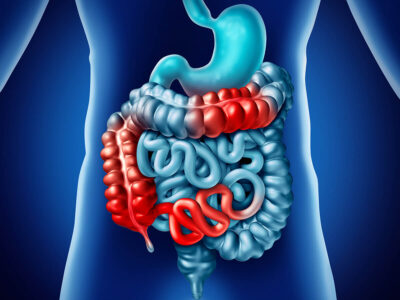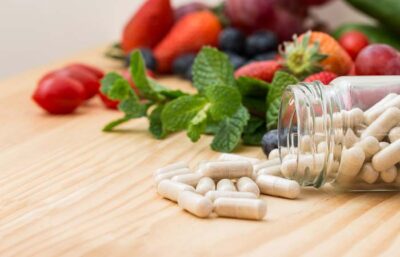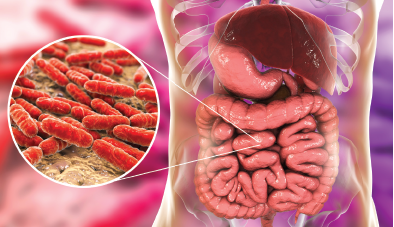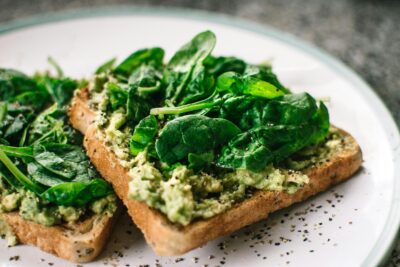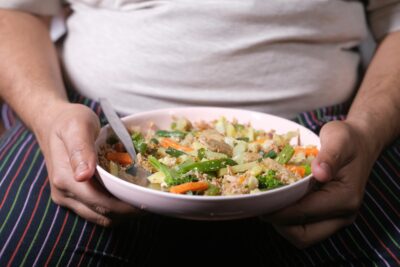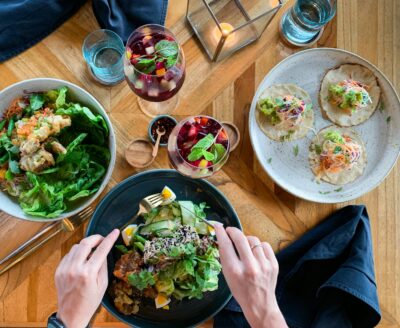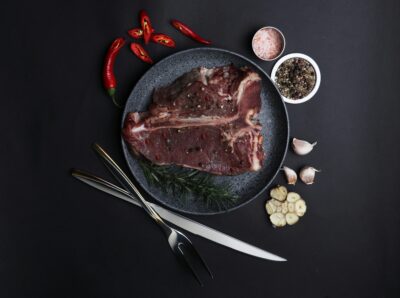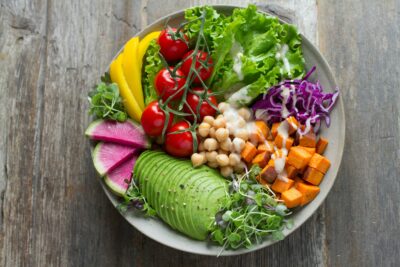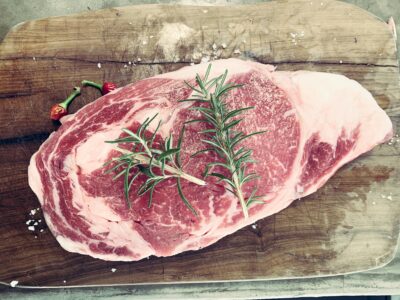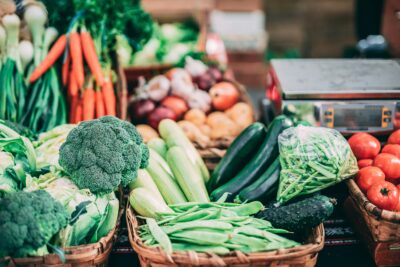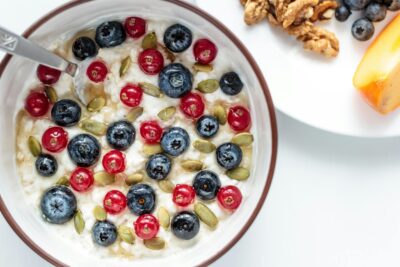You may be shocked to learn that most of your body’s immune system is housed in your gut. Thus, if you are dealing with a problem such as rheumatoid arthritis, which is related to dysfunctional immunity, your gut is likely the culprit.
A 2018 study shows a conspicuous link between rheumatoid arthritis and gut dysbiosis. The problem, unfortunately, is that most people are unaware about, or at least not focused on, their gut health. This is in no way surprising, as the symptoms of RA usually overpower those of the gut and end up disguising the underlying cause of the issue. Realize, however, that the gastrointestinal system is central to mind-gut-immunity. Why? Simply because it hosts over a Trillion immune cells. And no, that’s not a typo.
So, in this article I will describe exactly how you can retrain your immune system and reclaim healthy function by rectifying the functionality of your intestines. What I will be sharing with you is a form of microbiome hacking that has brought awe-inspiring results to an abundance of my own patients throughout the years.
I have broken all this information down into three sections, and if you are able to master all three, I am confident that you will be able to alleviate over 90% of problems related to gut health and rheumatoid arthritis.
The three sections are:
- Complex protein theory
- Intestinal transit time
- Probiotic concepts
Complex Protein Theory
The protein that we eat in our diet can come from a variety of sources, including both plants and animals. All proteins are long chains of amino acids connected together. When the protein enters our digestive system, there are special enzymes within our intestines that degrade the proteins into their individual components, called amino acids, which then get absorbed by the body. These intestinal enzymes are called proteases.
Despite their importance, sometimes proteases fall short and don’t get the job done. When this happens, we are left with large particles of protein that linger in our intestines and blood stream for long periods of time.
But why does this happen?
Well, certain types of proteins are more stubborn than others, and there may just not be enough proteases to degrade them. Protease enzymes are produced by our bodies, but can also be found in many types of plants. As you already know, the gut is just one big, giant immune organ; naturally, then, these incompletely digested proteins register as a foreign threat and generate an immune response in the body. Basically, the body thinks it’s under attack by these undigested proteins, causing it to secrete a bunch of immune chemicals which cause inflammation.
Let me give you some examples.
- Bovine serum antibodies and auto-immune disease
There are some very famous studies that looked at the human body’s response to beef and cow’s milk. In many people, the serum protein from cows is not broken down completely, which in many cases leads to antibodies. These antibodies are 10x more common in immune disease.
- Casein/Whey
Many folks struggle with breaking down the casein found in milk protein. Some people also have difficulties with whey. If you are dealing with immune inflammation, its best to avoid casein altogether, as well as most whey products. This includes dairy, milk, and cheese. Additionally, check your protein powder to make sure that it is not causing you problems. I prefer a plant based protein, but if you decide to use whey, I would recommend to opt for “whey isolate” rather than “whey concentrate”, which has casein in it. There is some person to person variation on this, so if you are just starting the protocol, it is best to avoid these altogether. Once you have mastered the process, however, you will quickly begin to see how things evolve. Note that there is a type of casein called A2 that’s a bit easier to digest, but it is much harder to find. You have to be specifically looking for A2 cow’s milk. I will provide a link in the notes section if you are interested.
- Gluten
This is probably one that you have heard talked about before, as it is estimated that nearly a third of the population has an issue with gluten. This is a multi-factorial problem. However, to make this brief and easy to understand, I tell most people to limit their contact with gluten containing products in general. This includes anything that has to do with wheat flour.
- Egg protein
This one is tough because many people who give up meat heavily rely on eggs as a source of protein. Some nutritionists would disagree with me on this, but there is a lot of misinformation around this topic. The data from several studies shows that egg protein can potentially trigger a strong immune response in the body, specifically in people with inflammatory conditions. My suggestion? Cut eggs out entirely for a few months and see if it makes an overall difference. Egg whites can sometimes be re-introduced when the time is right.
I want to be clear – I’m not saying these foods are bad. What I’m saying is that when you are trying to decrease inflammation in the body, and you intend to do it quickly, it is best to limit these types of proteins in the diet. It’s also very important to consider taking a protease enzyme supplement with your largest meal. I personally use an all natural one derived from plants, and it’s something that I’ve had very good results with. Whatever company you decide to use, you should validate that they responsibly source their enzymes and have a good track record of compliance and safety.
You can also get protease from plant sources.
Bonus: Best dietary sources of digestive enzymes: Must Read
Intestinal Transit Time
Let me introduce you to a concept called intestinal transit time. This is the amount of time it takes for food to travel through the GI tract. On average, food travels through the small intestine in 4-6 hours and the large intestine in about 12. If you are constipated, however, the presence of bacterial overgrowth may increase this process to several days or even up to a week.
Lingering Foods
Lingering foods is a term I use to describe any type of food that lingers in the intestinal tract for too long, and delays bowel movements. This list includes meat, cheese, sugar, and simple carbohydrates.
But how long is too long?
Anything longer than 12-18 hours, meaning that you should be having multiple bowel movements every single day. Though it may sound shocking, 2-4 daily bowel movements is ideal and normal around the world, as well as in our own human history. It has been deduced that our ancestors went 2-4 times per day back in the days when foraging for food was a necessity. Nowadays, especially in developed countries, we are lucky to even go once. Some of my clients who suffer from bacterial overgrowth, IBS, or constipation sometimes only go a couple of times per week, and as you can imagine, all of these folks have problems with inflammation, fatigue, and stress.
Therefore, it’s not surprising that more than half of all people with rheumatoid arthritis suffer from digestive issues.
But why do foods linger?
This is directly correlated to the amount of fiber within the foods. Recall that the so-called linger foods include meat, dairy, processed grains, and sugar, all of which have minimal fiber.
Also, when I say fiber, most people think of metamucil, or this thick powdery stuff that we mix into water and drink. However, when I talk about fiber (particularly insoluble fiber), I am referring to that chewy, fibrous material in plants and vegetables. Celery is a perfect example: despite how long or hard you chew it, you are always left with this material that you can’t really break up and end up swallowing whole. The same goes for broccoli, kale, and carrots. As it turns out, this fibrous material is not digested in the intestines, but it does play a very important role in helping digestion. Specifically, it 1) pulls in water and makes your bowel movements nice and soft, and 2) prevents the growth of bad bacteria in the small intestine and colon. This is why you hear a lot of people talking about fiber as being a “prebiotic”, as it essentially sets your intestines up for success by harboring good bacteria.
And by the way, there is nothing special about pre-biotics, so please don’t get tricked by marketing. All prebiotics are basically fiber and should ideally be obtained from your diet. The FDA thinks that 28 grams per day is enough, but I think that 40-50 should be your target. Keep in mind, that’s still only one half of the fiber that our ancestors used to eat when they foraged for food, so you can never really have too much.
So, what are some examples of high fiber foods?
Download the list.
As a note, these foods should comprise 75% of your daily consumption to ensure that you are getting enough fiber every day.
After about 4 hours, there is very little digestion taking place.
During the majority of its journey through the GI tract, food waste is relatively inactive. It just sits there and gets metabolized by your gut’s bacteria. Yet, this is where it gets interesting. The reason that lingering foods are a problem is because they create what are called secondary metabolites, which can be deadly.
The first time food gets metabolized it produces primary metabolites, which quickly become food for a second population of bacteria. This is when secondary metabolites are made. The first set of bacteria (the ones doing the primary metabolism) are good bacteria responsible for keeping our intestines healthy. But the second population of bacteria is problematic; Secondary metabolites are what cause bloating, inflammation, weight gain, depression, and even cancer. Think about when you feel bloated or inflamed… this is just the colon holding on to excess feces before expelling. And the longer that you let this surplus of feces build up without proper excretion, the number of secondary metabolites that can and will form within your body drastically increases.
By the way, you can test this out yourself. There are these blue colored muffins you can buy which will turn your stool blue. You can also eat an entire beet or two and see how long it takes for your stool to turn red. If it happens within 12-24 hours, you should be good. If it takes any longer (more than 2 days), you are probably dealing with a copious amount of bacterial overgrowth and inflammation. You can resolve this by eating a lot of fiber, and taking magnesium supplements when you are constipated. Milk of magnesia also works well. A typical starting dose is 30ml twice daily, but some people use it more than that (up to 4-5 times a day). The goal is to titrate and adjust it so that you are having 2-4 liquid bowel movements every day. Eventually, when you eat foods that contain a lot of fiber, you won’t need the magnesium. If you do not like milk of magnesia, you can try these natural alternatives (link). However you do it, you should aim for 2-4 bowel movements every day in order to get rid of the bad bacteria and replace them with good bacteria. Also, remember that certain medications and medical conditions can exacerbate constipation, so check to see if any of these are part of the problem.
Probiotic Concepts
When it comes to probiotics, many people have been brainwashed to obsess over colony forming units, the number of strains, the types of strains, etc. Some even talk about buying refrigerated versions vs soil based spore forms. There are even companies that will take your stool sample, analyze it, and send you custom designed blends.
I can tell you, as a physician having studied over 300 scientific articles on this subject, that my findings can be summarized as the following:
The three main bacteria in a good probiotic are Lactobacillus, Saccharomyces, and Bifidobacterium, with Lactobacillus and Bifidobacterium being backed with the best scientific evidence. So, rather than obsessing over the strain, just make sure that the probiotic you choose has one or more of the three listed bacteria in it.
It is very important that you introduce good microbes into your system at least twice a day, or, ideally, four times a day. Also, as you’re introducing these good microbes into the microbiome, you should simultaneously be getting rid of the old microbes. The way to do this is with regular bowel movements.
Turnover is key when it comes to retraining your gut functionality. Most people assume that simply taking a probiotic will fix the problem. However, if you are not constantly expelling waste with your probiotic intake (2-4x daily), you may be missing out on the full potential of these beneficial microbes. So to reiterate, don’t get caught up on the number of strains or colony forming units, and don’t waste your money on expensive probiotic supplements. The frequency of your probiotic intake is what makes the biggest difference.
Which probiotic is the best?
Some people use yogurt or other fermented foods. Others prefer oral probiotics, but with the countless options out there, it may be hard to figure out where to start. I have put together a helpful guide to supplements for my clients to use when tackling these questions. I tend to keep things simple and go for reputable and affordable brands.
Download Dasari MD’s Rheumatoid Arthritis Supplement guide
Just remember, the most important thing usually isn’t the number of strains, but rather the FREQUENCY of administration. You want to keep introducing good microbes into your system while actively getting rid of the old microbes in order to allow the new microbiome to have a chance to flourish and populate.
And don’t just take my word for it; There is scientific data backing this up.
Overall, if you are looking to solve inflammation linked to arthritis, probiotics may be helpful.
Before concluding this section, I want to talk about the topic of yogurt. If you are a vegan, this obviously does not apply to you. If you have a dairy allergy, or can’t tolerate it, then yogurt may not be for you either. But… if your only issue is lactose intolerance, or fear of dairy, then hear me out.
- Lactose content in yogurt is much lower than milk.
- Yogurt contains bacteria that help break up lactose.
- Fat free yogurt is great, but make sure that it is free of any thickeners or sweeteners. If you like full fat yogurt, then a grass-fed source is probably best.
- Yogurt has casein milk protein which can cause allergies in some people. This is prevented by getting a specific type of cow’s milk yogurt called A2, or switching to goat’s milk yogurt.
So, if you strongly desire traditional milk yogurt, keep these four things in mind. Otherwise, just take a supplement capsule. I have clients that do both, and many of them do fine with adding a bit of yogurt. As you may have noticed by now, I usually recommend avoiding dairy altogether – but to ignore the benefits of the right type of yogurt would be foolish. It is an easy and helpful way to get probiotics, and all you need is a spoonful 2-4 times a day.
If you would like to learn more about the intricacies of this topic, I have a blog post called Decoding Milk & Dairy. It is part of a larger series that describes the nutritional profiles of controversial food groups, such as eggs, fish, and meat. I realize that there are very strong opinions regarding the healthiness of foods, so I try to stick with the facts, and give you what I think is a safe zone for functioning every day.
I have had much success treating rheumatoid arthritis (RA), naturally, without medications in my practice. Typically, RA manifests in the brain and spinal cord, but is part of a three part problem affecting mind-gut-immunity. All areas need to be addressed to successfully solve arthritis; You must fuel the mind and properly heal the gut to reset your body’s immunity.
Here, we discussed how to heal the gut. You get rid of the bad, and come in with the good. And this cycle keeps going so that you can maintain a favorable microbiome.
Summary here:
- Aim for 2-4 bowel movements daily. (Consider taking a laxative, such as milk of magnesia)
- Limit complex proteins (until inflammation decreases)
- Consider a Protease Enzyme Supplement
- Eat Fiber-rich foods, Green and Leafy vegetables contain lots of Insoluble fiber. 40-50 grams daily if possible
- Limit sluggish foods like Sugars, Carbs, Meat, Dairy (perhaps with the exception of yogurt)
- Take Probiotics 2-4x daily. My favorites are listed here
- Drink Lots of water, a gallon a day, unless you have kidney or heart problems
- Avoid medications that cause constipation
Your goal should be to decrease your intestinal transit time so that the food you eat will undergo the necessary digestion in the most efficacious way possible, limiting any opportunities to create harmful metabolites from bacterial overgrowth.
Addendum:
There are a whole host of conditions associated with dysfunctional microbiome, the list includes: Eczema, Allergies, UTIs, IBS, IBD, Crohn’s/Colitis, SIBO, Candida, GERD, Viral illnesses (including Flu and COVID), Autism, Multiple sclerosis, Lupus, Rheumatoid
“Fuel the Mind, Heal the Gut, Reclaim Immunity”
Chanu Dasari MD (@DasariMD)
Have Multiple Sclerosis? Want to stop INFLAMMATION for good?
Join my free training at mind-gut-immunity.com
Top Picks
Protease Enzyme Supplement: PhytoZyme Protease by Physicians Trust
Probiotic Supplement: Jarrow’s Brand
Stool Softener: Milk of Magnesia, Dulcolax
Show Notes:
Although I am a licensed, and practicing surgeon, the presented material is intended for educational purposes only and should not be construed as medical advice. Please use your best judgment and consult with a healthcare professional regarding your needs.
Writer: Kaloyan Momchilov
Editor: Chanu R. Dasari MD

